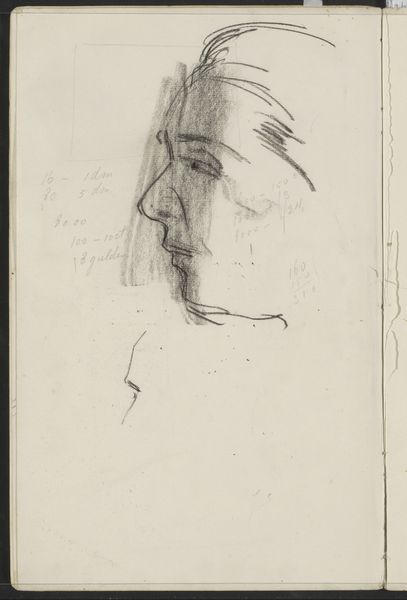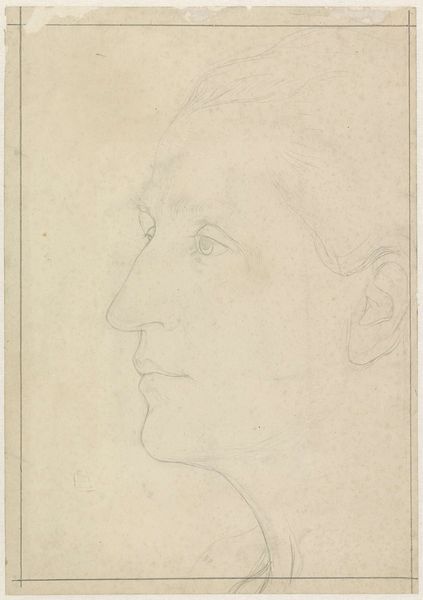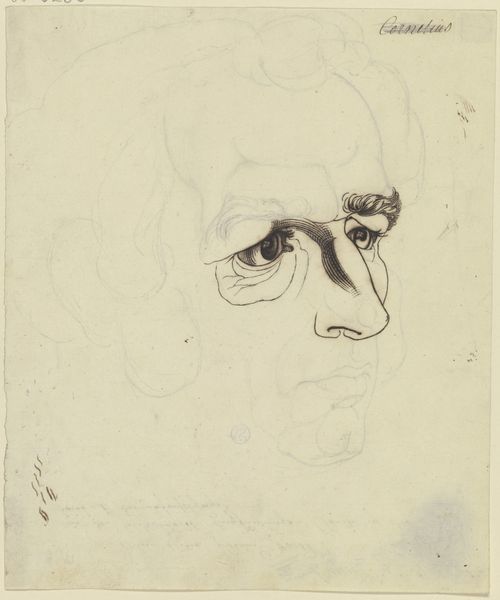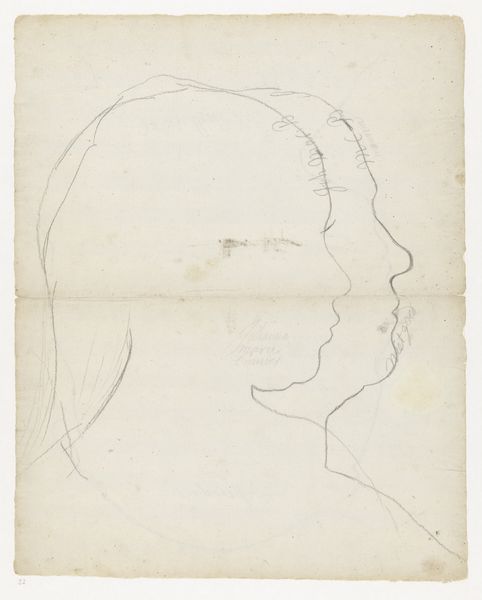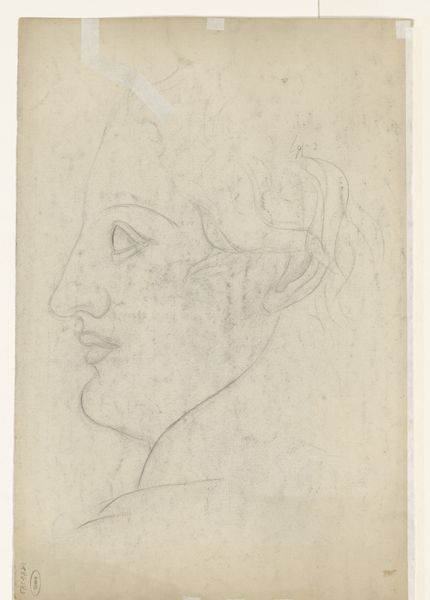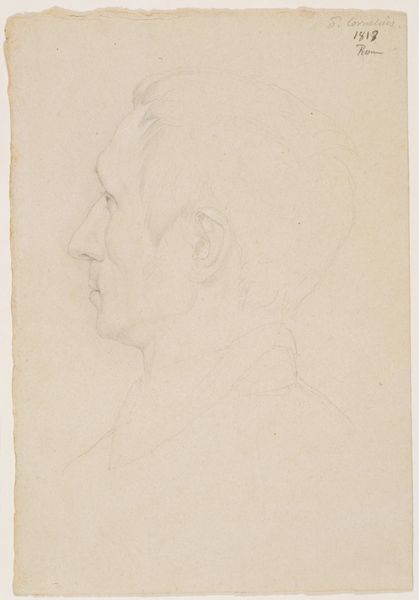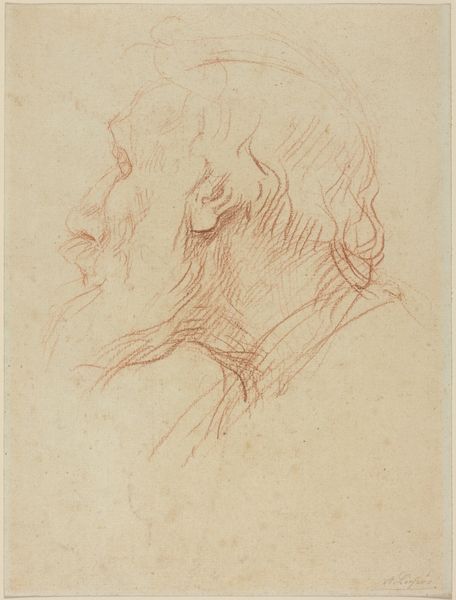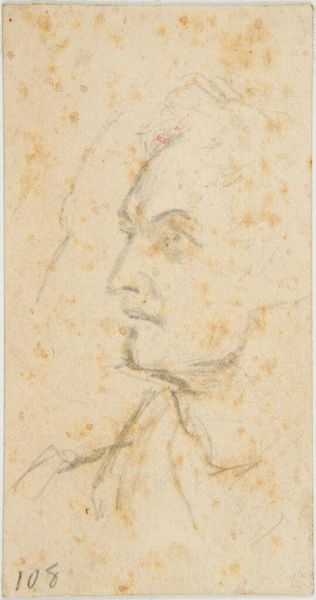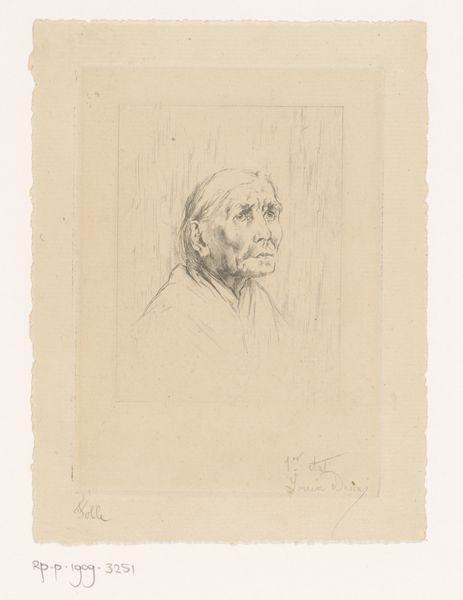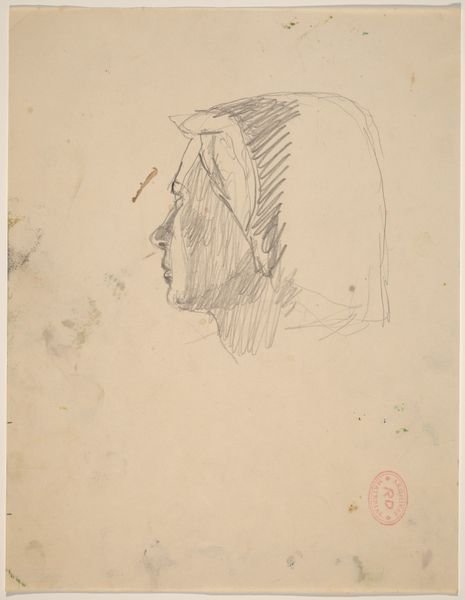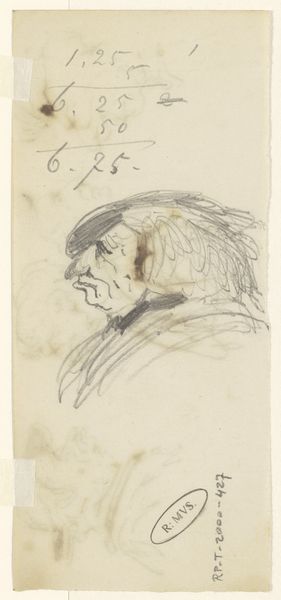
Portrait of George Eliot, seen in profile to the left 1881
0:00
0:00
drawing, print, paper, pencil
#
portrait
#
drawing
# print
#
paper
#
pencil
Dimensions: Sheet: 4 5/16 × 2 15/16 in. (11 × 7.4 cm)
Copyright: Public Domain
Curator: The work before us, currently held at the Metropolitan Museum of Art, is a pencil drawing from 1881 by George Richmond, titled "Portrait of George Eliot, seen in profile to the left." Editor: It’s a rather delicate sketch. So simple, almost ghostly, yet it captures something quite powerful about her presence. There's a melancholic beauty here. Curator: Absolutely. It was created toward the end of George Eliot’s life; in fact, just a few weeks before her death. You can see it's inscribed, “G. Eliot. Memory. 9 January 1881.” Editor: And knowing that changes how I see it completely. A study from memory… That injects a sense of loss, of holding onto a fading image. Considering Eliot’s contributions, not just to literature but to Victorian intellectual life—her advocacy of realism, her exploration of social issues—this becomes such an intimate, personal document. Curator: I agree. Richmond was a renowned portraitist; his drawings were popular, carefully made and often reproduced as engravings. To see this as a drawing made to memorialize is powerful. Think about the social and political significance of Eliot's writing at the time, particularly as a woman. This portrayal transcends simply capturing a likeness. Editor: How was Eliot received as a woman writing under a male pen name? Her real name was Mary Ann Evans, of course. Curator: Her choice to use a male pseudonym opened doors initially but also fueled debate about gender roles. Some were critical. But what endured was her talent—a power dynamic made evident through portraiture like this, securing her image and legacy, regardless of the constraints. Editor: It's poignant to consider how images like this helped solidify her status, beyond those gendered limitations that initially affected how her work was judged. Thinking about women creatives fighting to be taken seriously in art then and now makes me appreciate this delicate portrait even more. Curator: Agreed. It’s more than a study; it's an echo of Eliot's intellect and influence, and a delicate portrayal of her in the Victorian cultural landscape. Editor: Exactly. A fleeting portrait preserving something profoundly significant.
Comments
No comments
Be the first to comment and join the conversation on the ultimate creative platform.
